Wood Type
Each wood type has its own unique characteristics and appearance that can accentuate any living space
Walnut (black)

Our black walnut is harvested from Ohio and West Virginia, with trees averaging 100-120 ft.
Walnut is a very durable wood resistant to rot and decay, has a good shock resistance and is very strong. If you are looking for a high-end sophisticated wood with beautiful grain and durability, walnut is a great choice.
This premium wood can range from a light caramel brown to chocolate brown with dark brown streaks. Walnut is a living material that will lighten from chocolate brown to honey caramel brown over time with exposure to sunlight and air. Grain is straight with a medium texture and a moderate natural luster. It is relatively easy to work with, and takes well to glue, stains and finishes; although, it is hardly ever stained as it has a beautiful natural color.
Pricing is premium for walnut.
Hardness=8/10.
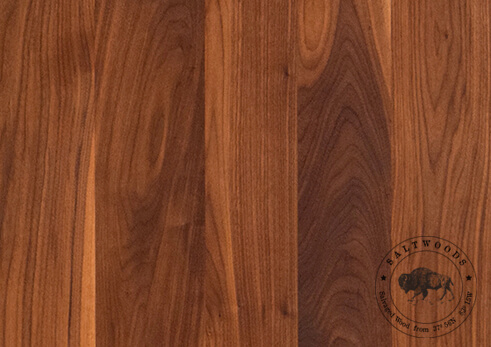
White Oak


Our white oak slabs are sourced from Ohio, West Virginia, and PA, with tree size averaging at 65-85 ft.
Often popular with designers for white oak’s strength and beauty.
Ranging from a light to medium brown with a grain that is straight, uneven, and coarse texture, white oak is a beautiful choice for furniture and cabinetry.
Due to high demand for its beautiful grain and durability, white oak is a premium priced option.
Hardness=9/10.
Rustic White Oak

This is an old-growth wood cultivated from trees that grew over hundreds of years, resulting in stronger, more stable wood. Abundant character and consistency in color.
Old growth wood is more dense and stable and less susceptible to decay and damage over time. This is especially beneficial in New England, where temperature varies throughout the year, and reclaimed wood can stand up to wet or dry conditions.
Our rustic white oak generally has medium brown tones. Some boards are rich in character with knots and cracks which can either be filled with epoxy or left open for rustic natural character.
Hardness=10/10.

Mahogany (Sapele)

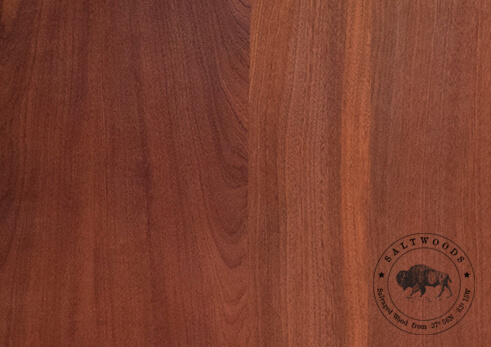
Sapele wood is sourced from Congo, Africa, whose trees average 100-150 ft.
This is a very strong and durable wood that is often used for boatbuilding, furniture and cabinetry, and one of the strongest woods we have available.
This abundant soft wood is reddish to light brown at the heartwood and yellow to near white at the sapwood. This wood darkens with age, giving older tables more character. The appearance of the grain is usually straight and even with a good natural luster.
As a result of the interlocking grain, Sapele Mahogany is difficult to work with, and pricing is premium for this wood.
Hardness=10/10.
Maple (hard)

Sourced from Northeastern United States, these trees typically range from 80-115 ft.
Hard maple is stronger, harder, and denser than all other species of maple. It is one of the strongest woods we have available.
This tree is a classic choice for woodworkers due to the clean and compact grain and remarkable hardness of the wood. Sapwood is often used with hard maple and is well renowned for its light blonde, almost white coloring.
Pricing is in the middle-range for maple.
Hardness=10/10.
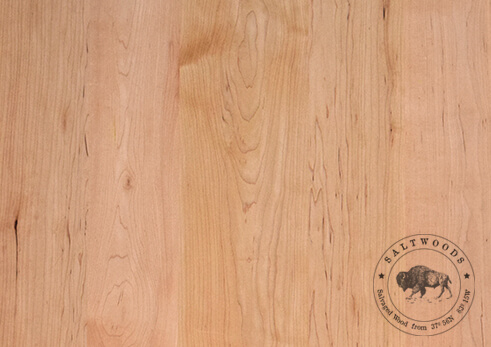
Cherry (American)

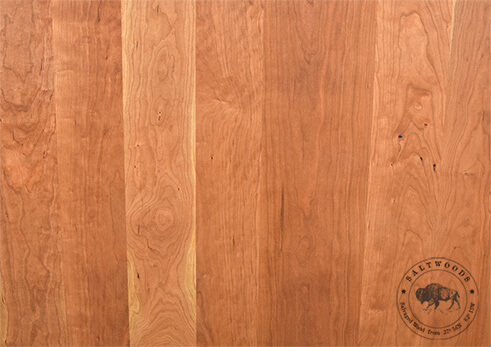
Sourced from Eastern North America from 50-100 ft trees.
Cherry is very durable and is rot and decay resistant.
Very popular in high-end furniture making as it exhibits beautiful grain and coloration. Light pinkish brown in color when cut fresh, cherry is a living material that will respond to its environment. The wood darkens over time with exposure to light into a deeper golden brown. Darkening can be accelerated by sunlight, air and wear. It is a closed grain hardwood making it smooth to touch. The straight grain also makes it easy to work with.
It is generally more expensive than oak or maple, closer to the walnut price range.
Hardness=8/10.
Natural Birch (yellow)

Supplied from New York, birch is widely used in woodworking and is popular for its light color.
This wood is heavy and strong with close grains and even textures.
Consider birch when looking for a cost-friendly hardwood that is light in color and shows little grain.
Hardness = 9/10
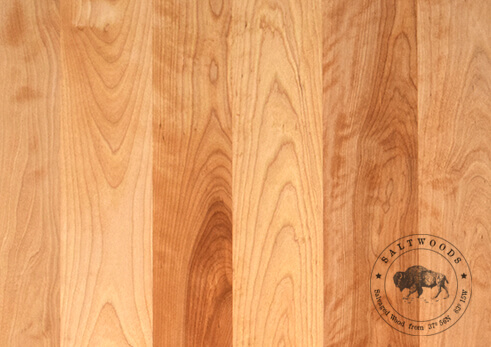
Ash

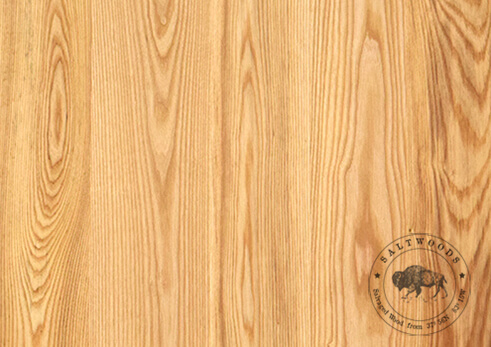
Forested throughout Eastern North America, ash trees typically range from 65-100 ft.
Heartwood on white ash is usually light colored, with its sapwood having very wide rings. Grain and texture is medium to course (open), similar to that of oak. Often used in flooring, turned pieces, tables, and even bats, ash is great to work with as it responds well to steam, stains, glues, and finishes. Consider ash when you’re looking for a cost effective strong wood that you don’t need to feel guilty about staining. Ash is naturally variegated, and each ash furniture piece will have lighter and darker boards. White wash finishes will still show this variation!
Due to high availability, it is one of the least expensive hardwoods on offer.
Hardness=9/10.
Red Oak

Red oak is sourced from Northeastern United States, these trees typically range from 80-115 ft.
One of the most popular types of hardwood found in US homes, red oak is hard, strong, and reasonably-priced.
Highly workable with machines and hand tools, woodworkers value this species for furniture, cabinets and other home decor. It is abundantly available in various widths and thicknesses.
It is usually less expensive than white oak, however thicker cuts and quarter-sawn boards can be more costly.
Hardness=9/10.
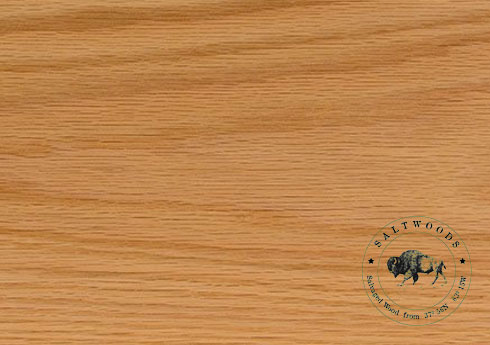
Redwood

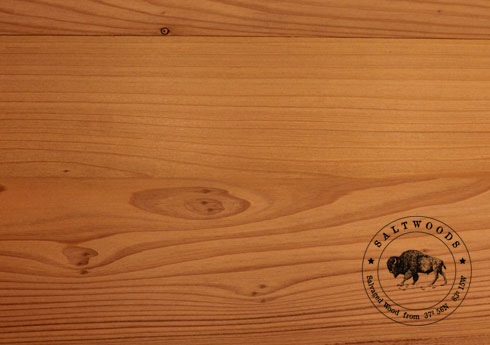
Our redwood slabs are imported from Northern California, whose trees reach 200-300 ft.
These rare and expensive cuts are taken from older fallen trees, pre-1930s. Redwood is exceptional to work with because it is hardy and durable, but lightweight. Heartwood is colored light pink to reddish brown, while the sapwood can be yellow to white. It has closed pores and a medium texture. Easy to work with machines and by hand, it also glues and finishes very well.
Hardness = 6/10
Spruce (black)

Found throughout most of Canada, northern New England, and the North Central U.S, with trees growing at 30-50ft.
Typically a creamy white/yellowish color, this wood is a pleasure to work with and very resilient to decay. This resistance to decay made a popular building material in boat building and construction.
Hardness = 6/10
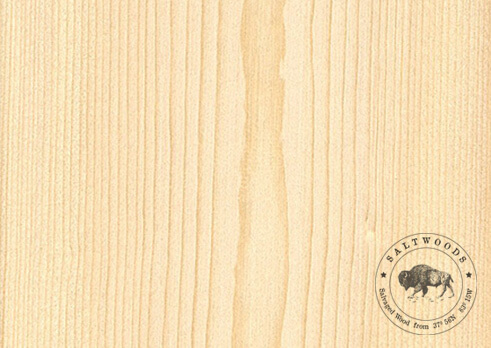
Reclaimed Oak

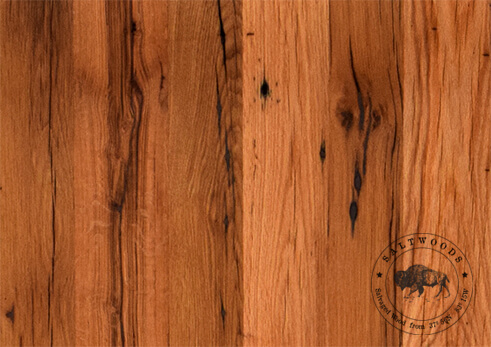
This is an old-growth wood cultivated from trees that grew over hundreds of years, resulting in stronger, more stable wood. Reclaimed from over 100 year old barns and structures throughout the US, this wood adds extraordinary character and a rich story to your home. If you’re looking for minimal environmental impact with abundant old wood character, consider reclaimed oak.
Old growth wood is more dense and stable and less susceptible to decay and damage over time. This is especially beneficial in New England, where temperature varies throughout the year, and reclaimed wood can stand up to wet or dry conditions.
Our reclaimed oak generally has warm brown tones varying from light red to dark brown boards. Some boards are rich in character with knots, crack, wormholes, nail-holes, and vestiges, which can either be filled with epoxy or left open for rustic natural character.
Due to its age, availability, and work required for manufacturing, reclaimed oak is priced at a premium.
Hardness=10/10.
Pine (Eastern White)

Sourced from NH, these trees typically range in size from 65-100 ft.
One of the softer woods available, pine is easy to work with both machine and hand tool.
This abundant soft wood is reddish to light brown at the heartwood and yellow to near white at the sapwood. This wood does tend to darken with age, giving older tables more character. The appearance of the grain is usually straight and even.
This wood is one of the more economically priced woods available.
Hardness = 5/10
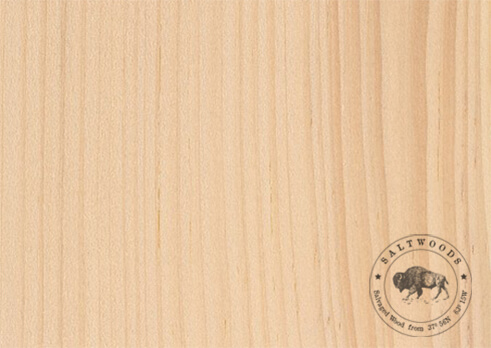
Reclaimed Chestnut

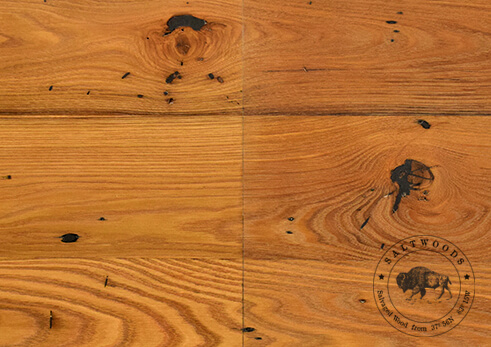
Due to a chestnut blight in the 1900’s, this wood is no longer allowed to be milled. As a result, lumber is rare, and chestnut is harvested from old barns and structures. Chestnut trees are just beginning to make a comeback.
Chestnut heartwood is a light to medium brown which darkens to reddish brown over time and a lighter brown at the sapwood. Chestnut features a pronounced grain that is coarse and uneven, and adds great character from the natural knots and mineral streaks.
Due its rarity, prices for reclaimed chestnut are premium.
Hardness = 6/10








